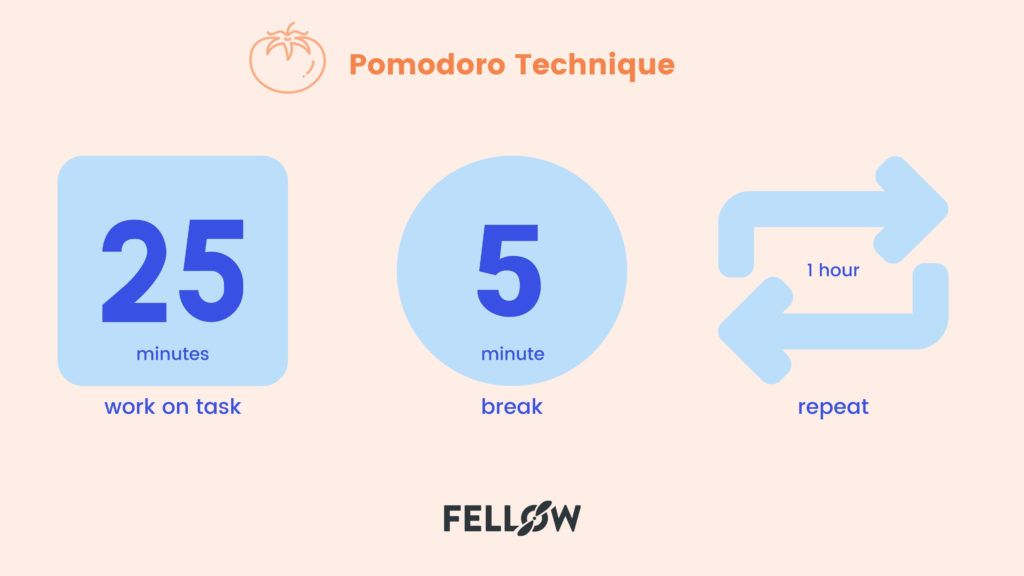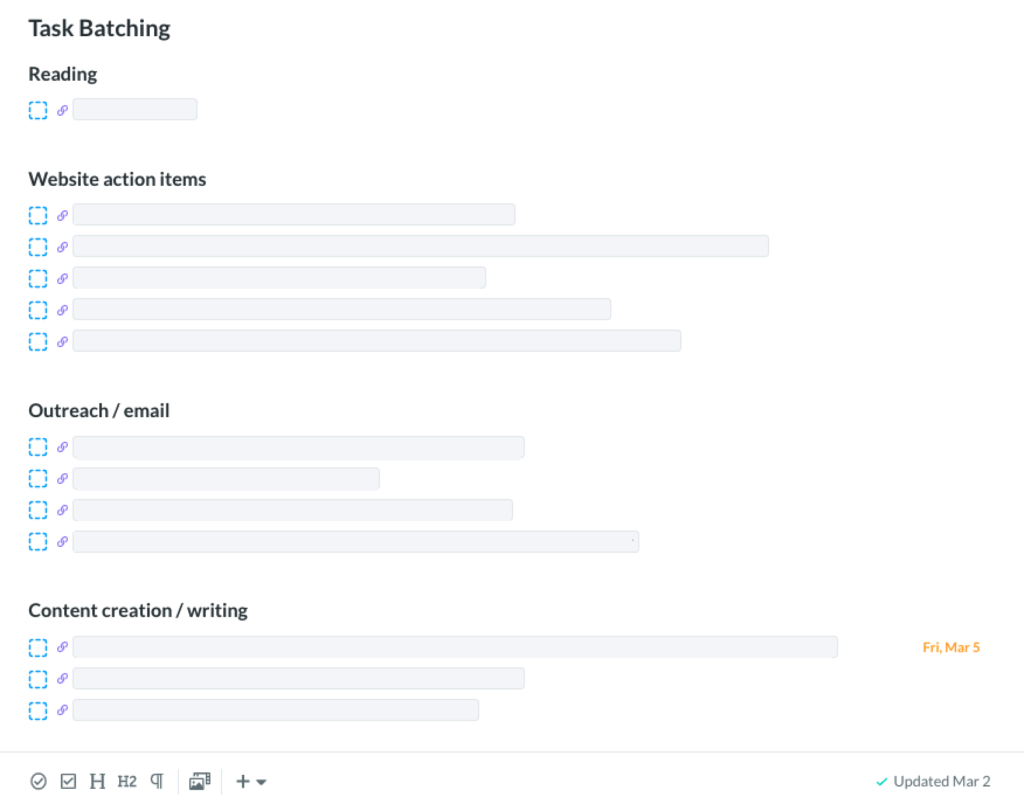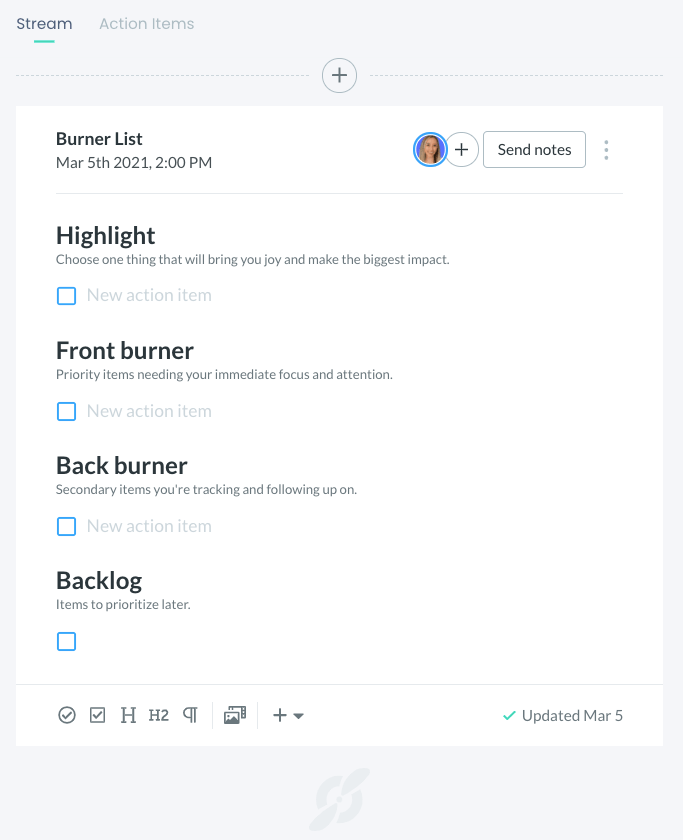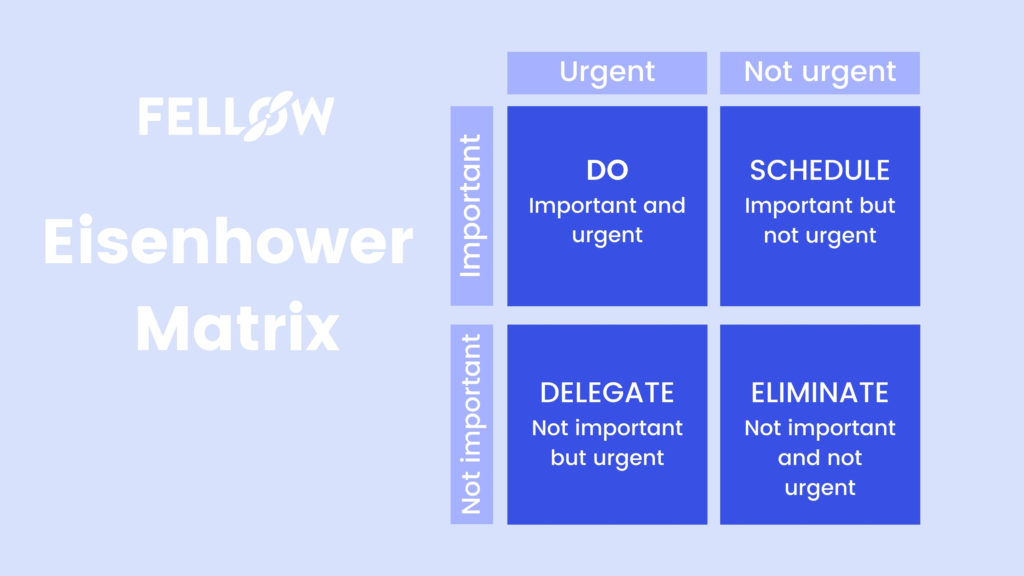8 Productivity Techniques to Tackle Your To-Do List Everyday
If your to-do list is slowly becoming out of hand, try out one of these eight productivity techniques to get more accomplished and minimize distractions.
No matter what’s on your list of things to do for the day, it’s easy to feel overwhelmed.
Whether it’s the book of work you told your manager you’d have done by Friday or the weekend list of grocery shopping and cleaning the house, it can feel never-ending.
How you decide to cross off the items on your list is up to you, but it’s always a good idea to utilize a technique to ensure you don’t fall victim to distractions, procrastination, or just straight-up forgetting.
What is a productivity technique?
A productivity technique is a method or process you put in place to make sure everything, or at least almost everything, that is on your to-do list actually gets crossed off.
When it’s time to buckle down and get serious about getting a task or project accomplished, it’s best to have a plan in place as to what’s most important, what will take you the longest to complete, and how much time you should allocate to each task.
Without a technique, you’ll waste time, energy, and resources.
- Pomodoro Technique
- Getting Things Done (GTD)
- Time blocking
- Task batching
- Zen to Done (ZTD)
- The Burner List
- The Eisenhower Matrix
- Eat the Frog
8 techniques to increase productivity
When you’re ready to take your level of productivity up a few notches, try out one (or more!) of these eight techniques and see how much more you’re able to get done in a day.
1 Pomodoro Technique
First things first, let’s start things off with the Pomodoro (Italian for tomato! 🍅) Technique.
Invented by productivity expert Francesco Cirillo in the late 1980s, this method consists of the idea surrounding getting tasks done in predetermined blocks of time. To start implementing this technique, break a task up into 25-minute periods of time, called Pomodoros. In between the Pomodoro, you take a 5-minute break. Once you’ve completed four Pomodoros, you can take a longer break, like 15 or 30 minutes.

Because this technique asks you to alternate Pomodoros, or hyper-focused time slots, with frequent but quick breaks, it promotes concentration and allows you to stay focused while reducing mental fatigue.
This method is ideal when:
– You feel that even minor distractions can often derail your entire to-do list.
– You consistently work past your personal point of maximum productivity.
– You are often optimistic about how much work you can get done in a day.
– You need to improve your work-life balance.
– You like to gamify your goal-setting.
2 Getting Things Done (GTD)
Another extremely popular productivity method is the Getting Things Done (GTD) technique. It’s so popular, in fact, that it has blogs, to-do apps, seminars, and classes completely centered around it.
Created by David Allen, this method makes it possible for you to work on multiple projects or tasks at once, while still having clear objectives and a sense of control over each project. The goal here is to get all of the ideas and projects you have on your plate out of your head and in an organized list, so that you can easily manage and see them all at once.
This method also recommends listing the to-dos in order of priority and the time you’ll need to accomplish them. As an example, if you have a task that you can accomplish fast should be done sooner. On the other hand, larger projects can be broken down into subtasks that can be done quickly.
In his book, Getting Things Done, Allen breaks this method down into five pillars.
1. Capture everything, from your ideas to your to-dos.
2. Clarify the things you have to do with as much detail as possible.
3. Organize the action items based on category and priority.
4. Reflect on your to-do list, see what your next action item should be, and give your list an in-depth review periodically to check on your progress.
5. Engage and get to work.
If you’re someone who always feels like you have too many loose ends to count, and are looking for a way to get organized, Getting Things Done could be for you.
3 Time blocking
If you feel like you often find that small tasks and interruptions are consistently derailing your workflow and taking over your day, time blocking could be the solution you’re looking for.
This productivity technique works by breaking your daily schedule into set, predetermined, and time-controlled units of time. As an example, maybe you’re going to give yourself 10 minutes for email, 45 minutes to create a new slide deck, and 75 minutes to work on an article. When you schedule a time for specific priorities, it’ll boost your productivity. Plus, time blocking also holds you accountable to your daily plan by assigning specific chunks of time to specific types of tasks.

You can also use time blocking to block your peak productivity time for something that needs more of your attention. So, if you find yourself to be most productive in the morning hours, time blocks your mornings to include minimal meetings so you can focus.
We asked Charlie Gilkey, author of Start Finishing, his best method for productivity. Gilkey shared:
“Time blocking – especially using what I call focus blocks – is my go-to practice. It mitigates the efficiency drain from task-switching at the same time that it allows me to get real about what I can and can’t accomplish.”
4 Task batching
A similar productivity approach is task batching. This consists of grouping similar low-value tasks together and completing them all, back to back, in one sprint.
While this is often our intention when we sit down to work, it’s common for distractions to throw a wrench in our plan. Maybe you have every intention of sitting down and spending an hour to create a captivating slide deck, and then you get pulled into something else.
Task batching is all about avoiding context switching while building a centered workflow with maximum momentum and limiting distractions. The goal here is to increase productivity by avoiding the frantic switching of gears that can occur when we hop from one project or task to another, and back again.

Organize your meeting action items by topic (or context) in a private stream. You can simply copy the action items from all your different meetings into your to-do list whenever you’re ready to tackle them.
5 Zen to Done (ZTD)
Developed by Leo Babauta, Zen to Done (ZTD) is built upon the premise of “It’s all about the habits and the doing, not the system or the tools”. ZTD is similar to GTD but with its own key differences. While Getting Things Done aims to focus on the system, Zen to Done is all about focusing on the habits you put in place for yourself.
It prioritizes actually doing the tasks on your list while also making sure that you’re focusing on one or two essential priorities, rather than trying to do everything (you’re not a superhero!).
The five solutions that Zen to Done brings to the table are:
1. Allows you to focus on one habit at a time.
2. Allows you to focus more on doing the actual items on your list.
3. Allows for more than one habit to adopt.
4. Allows you to simplify the tasks on your plate and prioritize what is most important.
5. Allows you to determine exactly what is classified as “the big thing” you want to do for the day or week and go from there.
6 The Burner List
This one is for those who love to-do lists, and love to cook. 🥘
Created by Jake Knapp, The Burner List is a to-do list that centers around having a “Front burner” on the left-hand column of your list, and a “Back Burner” on the right. You then divide the back burner column in half to create a separate space in the lower right, which is titled “the kitchen sink.”
To break this down a little further, your to-do list will look like:
– Front Burner: Your left column will consist of your most important task or project. The trick here is that only one item is allowed (you wouldn’t put two pans on one burner!). Under the task, list the to-dos needed to cross it off.
– Back Burner: Your right column is where your second to highest priority project goes. Again, only one item is allowed on this burner. Because it’s less important than your front burner, it doesn’t need as much space on your list.
– The Kitchen Sink: Your bottom-right column consists of the least important action items that are separate from your front and back burner projects. Because these live in a smaller space, it’s up to you to limit the smaller and less important priorities on your plate so you can focus on the bigger tasks at hand.

Check out how to add this burner list template to your private streams!
The Burner List is an effective productivity technique because it ensures that you keep your attention on what’s most important and leave out the fluff.
7 The Eisenhower Matrix
The Eisenhower Matrix, sometimes referred to as The Eisenhower Box, is for those who like graphs, or for those who are a big fan of the 34th president of the United States.
Essentially, this method makes it possible to visualize your tasks on an XY axis and is helpful for visual learners looking to prioritize complex projects and tasks. For this method, you’ll want to break out a pen and paper.
Then, draw a large plus sign for your graph, where your X-axis (the horizontal line) will represent the level of urgency. The left side is most important while the right is the least urgent. Then, your Y-axis (vertical line) will visualize the importance, from lowest in the bottom and highest at the top.
Once you do this, you’ll have four boxes with four distinct categories:
– Urgent and important
– Important but not urgent
– Urgent but not important
– Neither urgent or important
How you determine which task goes where will depend on deadlines and how long you think it’ll take you to cross it off the to-do list.

8 Eat the Frog
Last, but certainly not least, is the Eat the Frog method, which is when you do the hardest tasks on your to-do list first. This is based on the Mark Twain quote:
“If it’s your job to eat a frog, it’s best to do it first thing in the morning. And If it’s your job to eat two frogs, it’s best to eat the biggest one first.”
Self-help expert Brian Tracy developed this method, which is best for people who put off the important items on their to-list, which means they end up missing their deadlines or rushing through their work. It’s also ideal for those who fall victim to procrastination.
To utilize this method, you’ll want to put the most difficult or most important task first on your to-do list for you to do as soon as you start the day. Then, the rest of the day you’ll feel more productive and focused, knowing that the worst is over. This also applies to a task you often procrastinate or one you’d rather avoid doing altogether.
Time to get started!
No matter which productivity technique you decide to implement, it’ll feel so good to roll up your sleeves and get started. Even better when you can cross off a task you’ve been procrastinating. If you give one method a shot and it doesn’t seem to be working — don’t get discouraged! Try another one on for size.
And, to take your productivity level one step further, get the right software on your side. When you’re utilizing an application like Fellow, being productive at work has never looked more streamlined – especially if you’re someone who attends a lot of meetings! Every meeting will start and end on time, there will always be clear and concise action items to put in place, and will have an organized agenda to circle back to at a moment’s notice.











